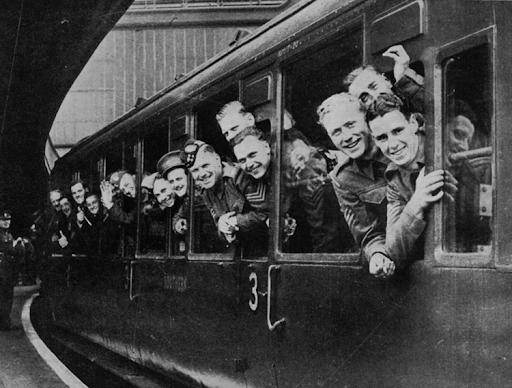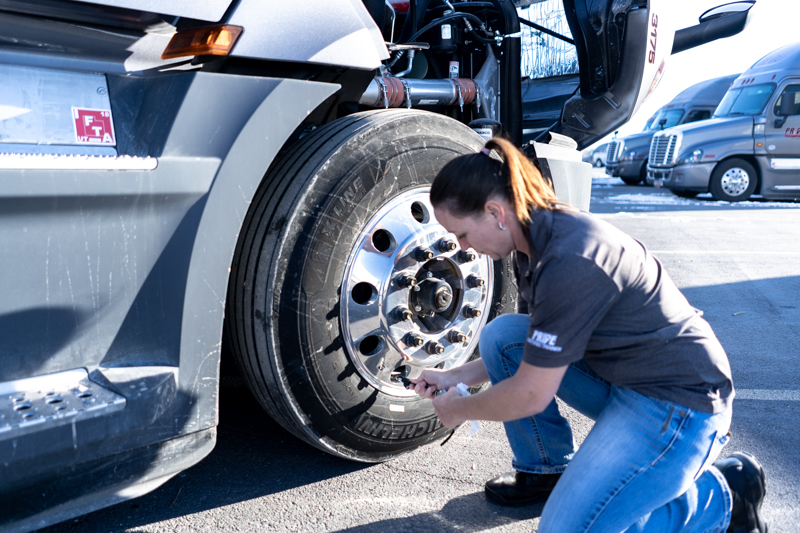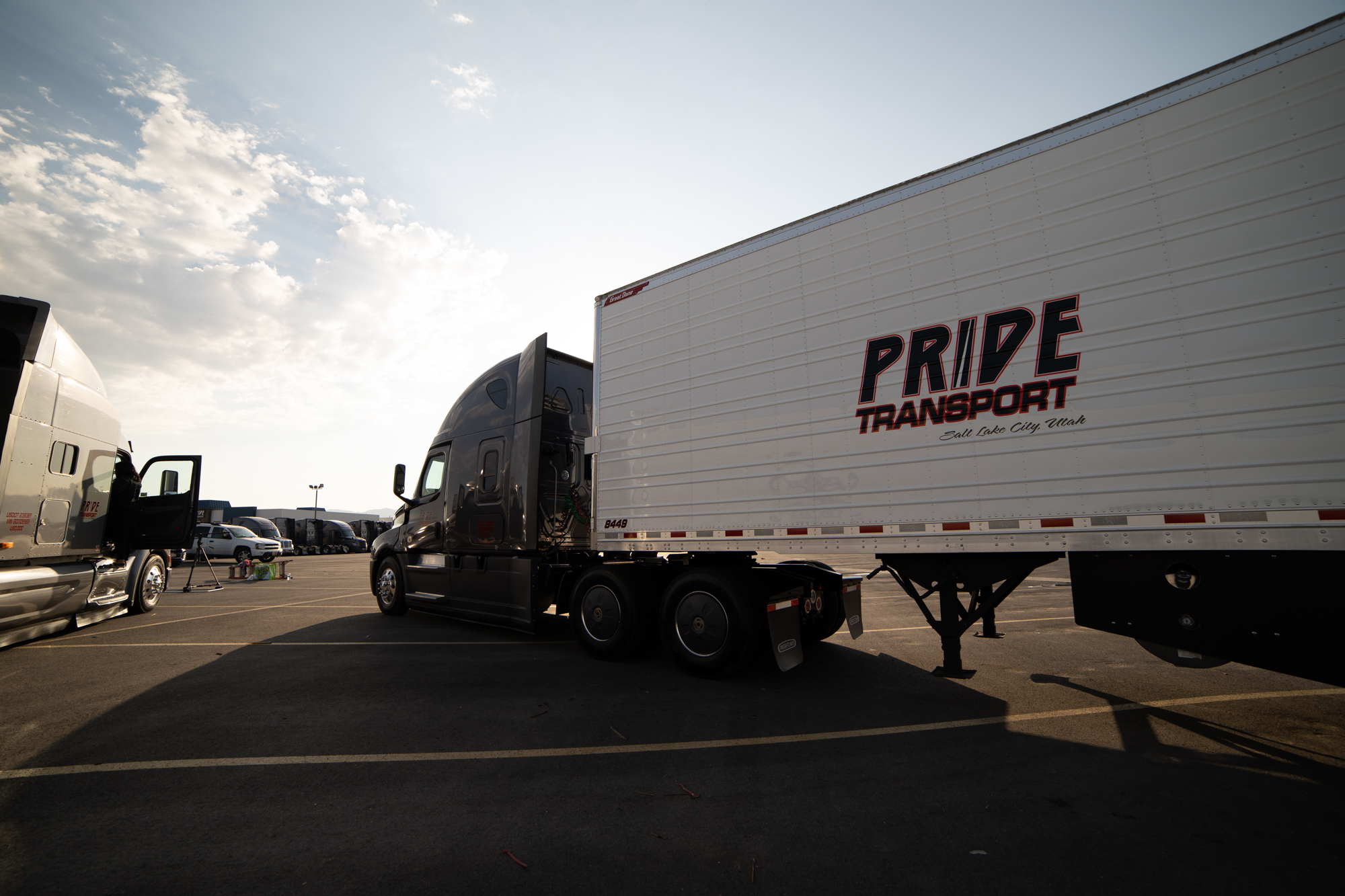by Pride Transport | Jul 31, 2019
We share the roads with them, we count on them to move goods across the country. We romanticized the industry and sometimes we demonize them as well. No matter what you think when you see a truck on the highway or backing into a loading dock, the fact remains that trucking is American Commerce’s lifeblood.
Trains Were King
In the beginning, trains were the rage. Trains were an efficient and economical way to move goods across the country. The country was united by rails and trains were moving everything from food to furniture across the country. When the trains reached cities and major hubs, horse-drawn carts were used to get the goods from the trains to small towns and suburban centers. Trucks were not considered an integral part of commerce in the United States. They were secondary to trains. This was due in part to the fact that in 1914, there were less than 15000 miles of paved roads in the United States. Trains and tracks still ruled.
In 1916, the Seattle Chamber of Commerce hired a truck and a diver to go from Seattle to New York City. The idea was to prove to manufacturers and merchants that highways and truck transport could be a significant form of commerce. The trip took 31 days start to finish and did little to convince those who moved goods by train that trucks were even slightly competitive.
In the early 1920s, there were only 10,000 in the entire country., They were built to be very basic, lean and tough to handle the often rough roads in small-town America. They were uncomfortable as well, with hard rubber tires which made driving in one for long stretches very painful and early truck drivers had serious back and neck problems
In the late ‘20s trucks were equipped with electric running lights and air-filled tires. This meant the trucks could go faster, travel at night and be more comfortable for the drivers. Still, trucks were not seen as the best way to transport goods across the country. Also around this time, the semi was invented and this did a great deal to promote trucks as a way to ship freight and cargo.
What War brings
In the late 1900s, the trains were filled with “doughboys” and equipment as America got into World War One. Again in the late 30’s early 40’s train space was taken up with soldiers and equipment to help the war effort in World War Two. During this time a lot of trucks were being manufactured but mostly for the war effort. However, because trains were filled there was a growing need for trucks to move goods that could no longer fit on trains. By the mid-1930s there were 239,000 long -haul trucks registered in the country with a top speed of 25 miles per hour. Around this time the federal government spent $75 million on new highway construction, pushing the use of trucks closer to the forefront.

In 1935 the Motor carrier act presented the trucking industry with a set of regulations for all trucks traveling the nation’s highways. The idea of the regulations was to counter what many believed was the cause of the great depression; an unregulated market place. This time Utah and Salt Lake City became a major trucking and transportation hub. The focus was moving away from trains and on the enormous possibility of trucks.
Federal Boost
In 1956 a major change came about that pushed trucking into the forefront of commerce for good. President Eisenhower signed the Federal-Aid Highway Act into law. This law originally authorized $25 Billion for the construction of 41,000 miles of the Interstate Highway System over a 10-year period. There was now a road for trucks to rule.
Age of Aquarius
The ‘60s saw a lot of change politically, socially and economically in the United States. Peace and love were the watch cry, hippies and squares were trying to communicate and trucks were taking on the personality of drivers. More custom cabs were being seen. Trucks were getting better gas mileage and there was a certain romanticism to driving the open road. All of this was leading the country into the heyday of long haul trucking.
The ‘70s
The seventies saw the biggest cultural and social changes in the trucking industry. The industry was looked on as having a very “cool lifestyle”. Movies like “Smokey and the Bandit” pushed the trucking industry more into the consciousness of the mainstream. Again, the call of the open road, being a rebel and keeping the country supplied called to a wider swath of society. Hippies who were looking for a job where they could be their own boss and patriots, ex-military, who were looking for a way to keep America at the top of the economic world all took up the new frontier of trucking
Later in the seventies, songs like “Convoy” by C.W. McCall brought the CB radio and trucker speak more into the mainstream and barriers between truckers and ‘civilians” broke down a little more.
The seventies also saw the personal expression in trucks and cabs hit its apex. Drivers were adding additional features to their cabs for more comfort on the road and to be better rested for long hauls.
All in all, the ‘70s saw more than 18 million trucks operating in the US as America was even more dependent on the trucking industry.
Also, the truck engine became more durable to handle the long miles as trucking became the preferred method of moving freight.
Right This Way, Ladies
The ‘80s marked advances in engine technology and the emergence of automatic transmission. This made driving easier all around and it also opened the field of truck driving up for women. Automatic transmission on trucks made it easier for women to drive. Also the use of satellite technology allowed for truck drivers to stay in touch more easily and dispelled some of the nightmare stories of being lost on the road. Again, these changes helped usher in an era of women drivers that has only grown over the years.

In 1981 all states adopted a maximum gross weight limit of 80,000 pounds on interstate highways. Weights and measure truck stops were installed in highways, making things a little rough for drivers.
In 1984 the trucking industry was deregulated moving the industry to a more public-oriented industry. Professional standards for drivers became a focus and the interchange between drivers and the general public became an issue that many companies focused on. Good relationships between truck drivers and non-truck drivers were vital.
In the latter part of the ‘90s, the industry began to deregulate and more independent owner/operators entered the industry.
In 1999 The Motor Carrier Safety Improvement Act was signed into law. This eventually created the Federal Motor Carrier Safety Administration that now oversees the entire industry.
2000 - Present
It’s no surprise that technology is re-shaping the trucking industry all the time. Electronic-on-board recorders (EOBRS) can now track a myriad of details from fuel tracking and location to driver’s hours on the road and resting. Technological advances make for safer drivers and also contribute to the efficiency of the driver in the cab.

Now there is talk of autonomous trucks, ones that will “drive” themselves. Technology opens the possibilities however, there is never going to be a replacement for the sound judgment and the skills of a human truck driver. No matter what the future holds as far as vehicle technology, it will never change the fact that America’s commerce has it’s beating heart in the trucking industry.